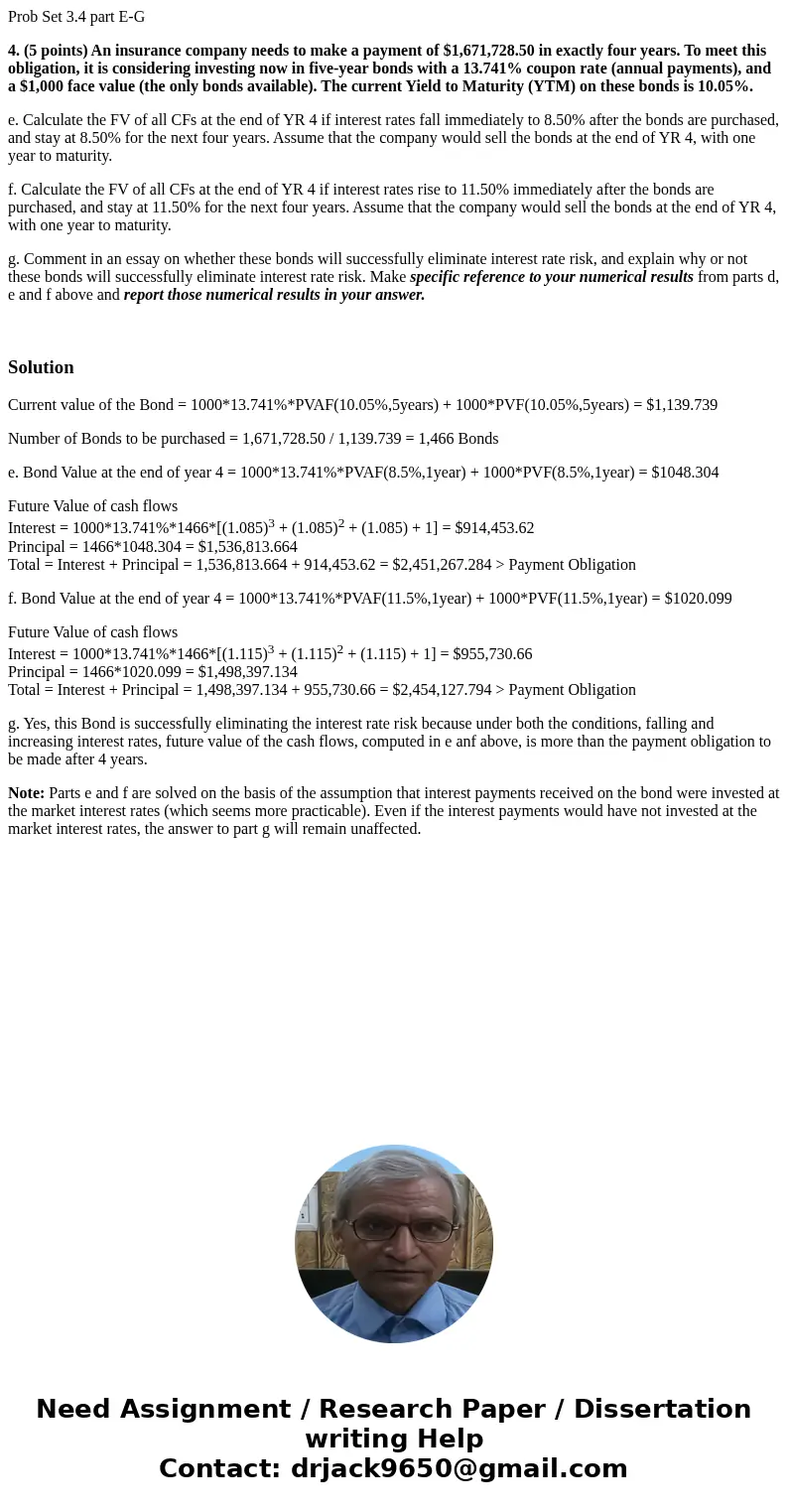Prob Set 34 part EG 4 5 points An insurance company needs to
Prob Set 3.4 part E-G
4. (5 points) An insurance company needs to make a payment of $1,671,728.50 in exactly four years. To meet this obligation, it is considering investing now in five-year bonds with a 13.741% coupon rate (annual payments), and a $1,000 face value (the only bonds available). The current Yield to Maturity (YTM) on these bonds is 10.05%.
e. Calculate the FV of all CFs at the end of YR 4 if interest rates fall immediately to 8.50% after the bonds are purchased, and stay at 8.50% for the next four years. Assume that the company would sell the bonds at the end of YR 4, with one year to maturity.
f. Calculate the FV of all CFs at the end of YR 4 if interest rates rise to 11.50% immediately after the bonds are purchased, and stay at 11.50% for the next four years. Assume that the company would sell the bonds at the end of YR 4, with one year to maturity.
g. Comment in an essay on whether these bonds will successfully eliminate interest rate risk, and explain why or not these bonds will successfully eliminate interest rate risk. Make specific reference to your numerical results from parts d, e and f above and report those numerical results in your answer.
Solution
Current value of the Bond = 1000*13.741%*PVAF(10.05%,5years) + 1000*PVF(10.05%,5years) = $1,139.739
Number of Bonds to be purchased = 1,671,728.50 / 1,139.739 = 1,466 Bonds
e. Bond Value at the end of year 4 = 1000*13.741%*PVAF(8.5%,1year) + 1000*PVF(8.5%,1year) = $1048.304
Future Value of cash flows
Interest = 1000*13.741%*1466*[(1.085)3 + (1.085)2 + (1.085) + 1] = $914,453.62
Principal = 1466*1048.304 = $1,536,813.664
Total = Interest + Principal = 1,536,813.664 + 914,453.62 = $2,451,267.284 > Payment Obligation
f. Bond Value at the end of year 4 = 1000*13.741%*PVAF(11.5%,1year) + 1000*PVF(11.5%,1year) = $1020.099
Future Value of cash flows
Interest = 1000*13.741%*1466*[(1.115)3 + (1.115)2 + (1.115) + 1] = $955,730.66
Principal = 1466*1020.099 = $1,498,397.134
Total = Interest + Principal = 1,498,397.134 + 955,730.66 = $2,454,127.794 > Payment Obligation
g. Yes, this Bond is successfully eliminating the interest rate risk because under both the conditions, falling and increasing interest rates, future value of the cash flows, computed in e anf above, is more than the payment obligation to be made after 4 years.
Note: Parts e and f are solved on the basis of the assumption that interest payments received on the bond were invested at the market interest rates (which seems more practicable). Even if the interest payments would have not invested at the market interest rates, the answer to part g will remain unaffected.

 Homework Sourse
Homework Sourse